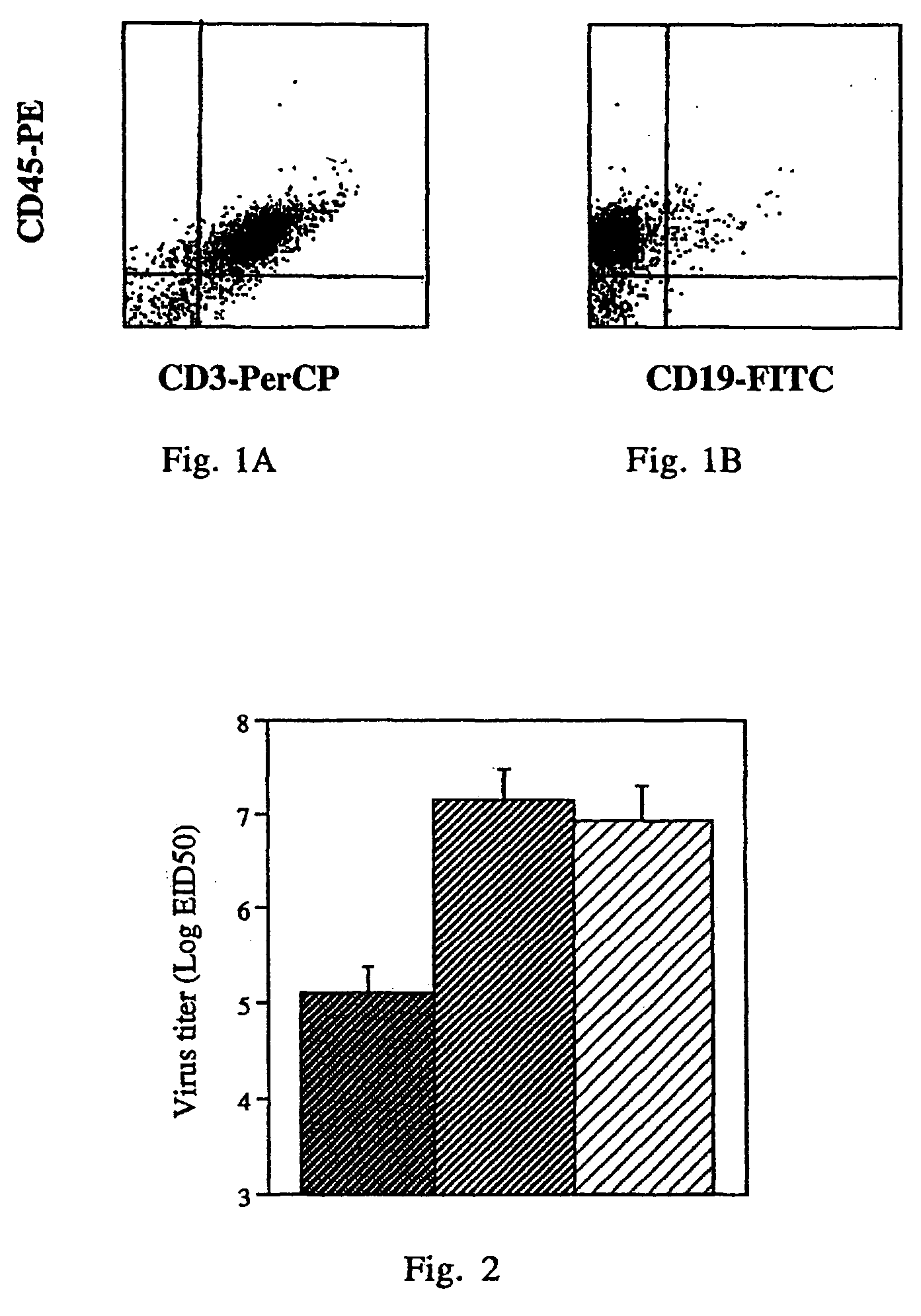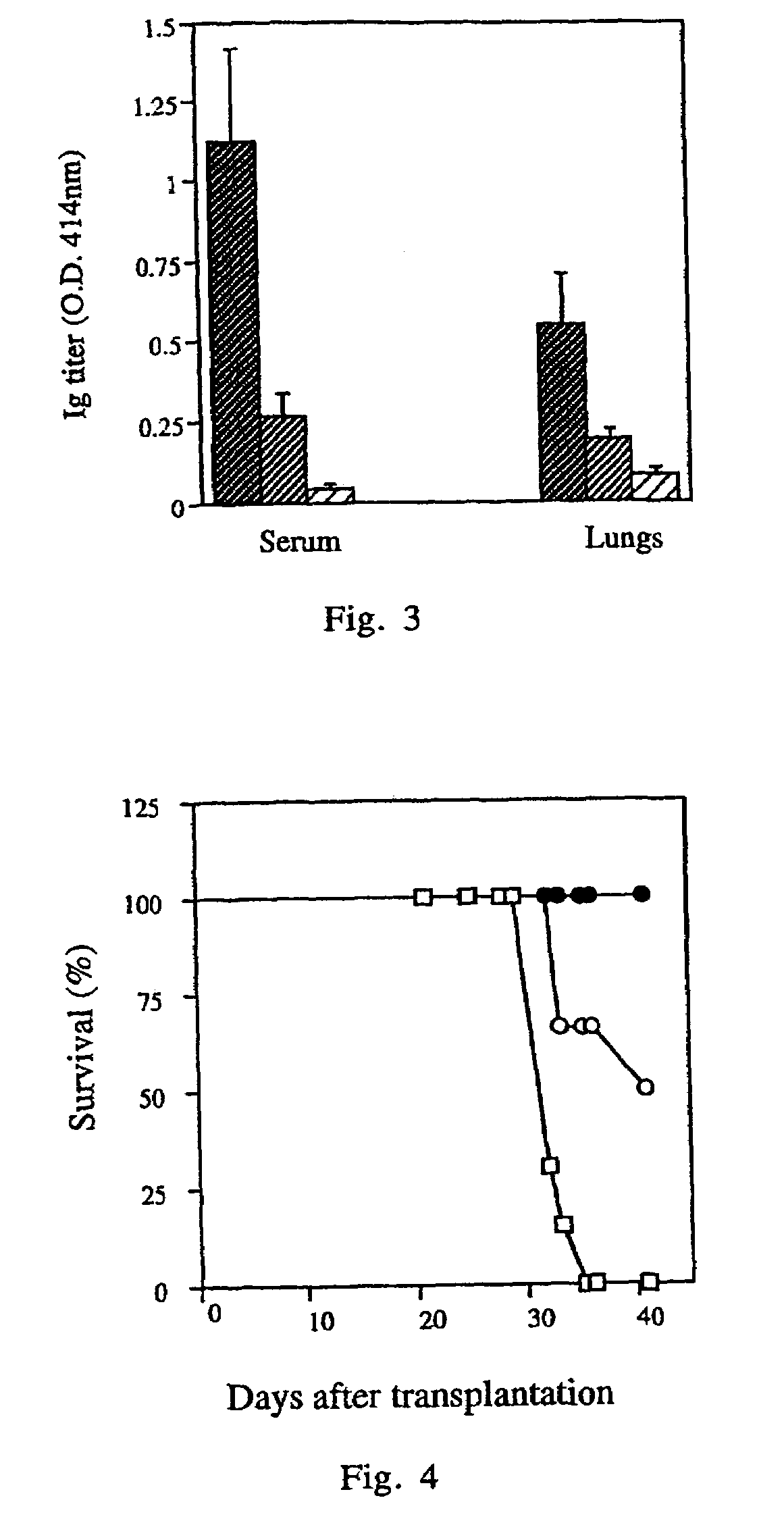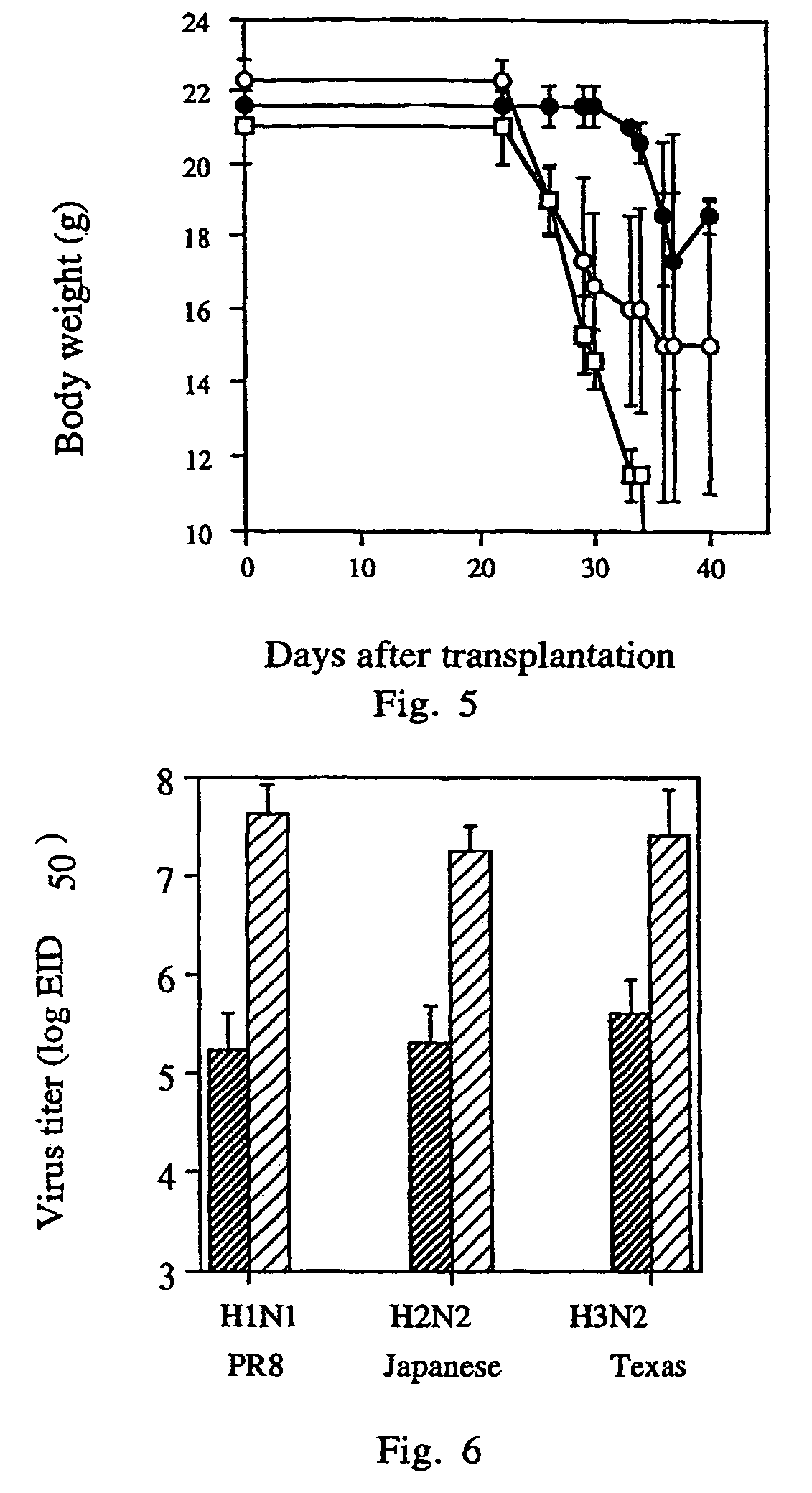Peptide-based vaccine for influenza
- Summary
- Abstract
- Description
- Claims
- Application Information
AI Technical Summary
Benefits of technology
Problems solved by technology
Method used
Image
Examples
example 1
Response of the Chimeric Mice to Whole Inactivated Influenza Virus
[0060]In order to establish the suitability of the human / mouse radiation chimera for evaluating the synthetic peptide-based vaccine, we have first evaluated their immune response towards inactive purified influenza virus which is known to be protective. The mice were immunized i.p. with 50 μg of the virus on the day of PBMC transplantation, followed by a sublethal viral challenge with influenza A / Texas / 1 / 77 strain 14 days after immunization. The vaccination of human / mouse radiation chimera with the whole killed virus vaccine, without any adjuvant, induced production of specific antibodies—the serum antibody titer was significantly higher (2.4 fold) in the immunized chimera as compared to the control group. Moreover, this vaccination markedly reduced the subsequent virus infection. The lung virus titer after challenge was significantly lower (by 2.7 orders of magnitude) in the immunized chimera as compared to the contr...
example 2
FACS Analysis of Immunized Mice for Evaluating the Engraftment of Human PBMC in Human / BALB Chimera
[0062]The successful engraftment of the human cells in the human / mouse chimera was demonstrated in a preliminary experiment showing that most of the lymphocytes in the peritoneum (50–80%) and in the lungs of the mice (30–60%) were of human origin. For the evaluation of human cell engraftment in the human / mouse chimera, the presence of human cells in the engrafted mice was analyzed by FACS.
[0063]FIG. 1 is a FACS histogram depicting the pattern of human lung lymphocytes after immunization with the tetra construct without further challenge infection. The cells were stained with anti-CD45 antibodies together with anti-CD3 or together with anti-CD19. As shown, most of the human cells (stained with anti-CD45) are CD3+, namely T cells (80%–90%) and only a minor population is CD19+ (3%–10%). Similar data were obtained for human lymphocytes in the peritoneum. It is of interest that the CD8+ / CD4+...
example 3
Virus Clearance from the Lungs Following Sub-Lethal Challenge
[0064]Influenza infection is a respiratory disease, hence, a local immune response induced by an intranasal administration of the vaccine could be more efficient than parenteral administration. The immunization schedule was modified in order to adapt it for intranasal immunization.
[0065]The mice (6–8 per group in 7 repeated experiments) were immunized intranasally (i.n.) 10–12 days after PBMC transplantation, as described in the Methods. Ten days later, they were challenged i.n. with 10−4 HAU in 50 μl allantoic fluid of live A / Texas / 1 / 77 strain of influenza virus. Five days later they were sacrificed and their lungs were removed for virus titration. As shown in FIG. 2, which depicts the cumulative results, the vaccination with the tetra construct enabled the chimera to clear the virus from their lungs significantly more efficiently than the group vaccinated with the native flagella, or the group which was not transplanted ...
PUM
 Login to View More
Login to View More Abstract
Description
Claims
Application Information
 Login to View More
Login to View More - R&D
- Intellectual Property
- Life Sciences
- Materials
- Tech Scout
- Unparalleled Data Quality
- Higher Quality Content
- 60% Fewer Hallucinations
Browse by: Latest US Patents, China's latest patents, Technical Efficacy Thesaurus, Application Domain, Technology Topic, Popular Technical Reports.
© 2025 PatSnap. All rights reserved.Legal|Privacy policy|Modern Slavery Act Transparency Statement|Sitemap|About US| Contact US: help@patsnap.com



